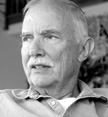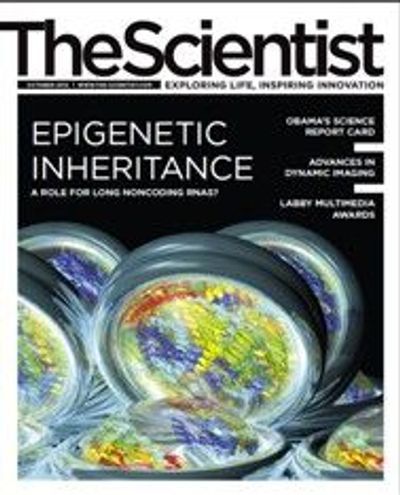 Twenty-three years ago, Penn State evolutionary anthropologist and paleobiologist Nina Jablonski was asked to give a lecture on skin to an introductory human biology class at the University of Western Australia. She wanted to talk about the evolution of skin color, but found the academic literature “completely bereft of good discussion” on the topic. At the time she had been studying primate evolution and the fossil record of Old World monkeys, and she still does research in paleontology today. But the problem nagged at her, and eventually she devoted much of her research to the exploration of skin pigment, both its evolutionary roots and social implications. “It was time to put our social reservations aside and start working on it,” she says. Jablonski is currently starting a new project to investigate vitamin D production in South Africa, where people with a great range of skin pigmentation live under a highly...
Twenty-three years ago, Penn State evolutionary anthropologist and paleobiologist Nina Jablonski was asked to give a lecture on skin to an introductory human biology class at the University of Western Australia. She wanted to talk about the evolution of skin color, but found the academic literature “completely bereft of good discussion” on the topic. At the time she had been studying primate evolution and the fossil record of Old World monkeys, and she still does research in paleontology today. But the problem nagged at her, and eventually she devoted much of her research to the exploration of skin pigment, both its evolutionary roots and social implications. “It was time to put our social reservations aside and start working on it,” she says. Jablonski is currently starting a new project to investigate vitamin D production in South Africa, where people with a great range of skin pigmentation live under a highly...
 Kevin Morris studied HIV vaccines for his PhD at the University of California, Davis, but during a postdoc at the University of California, San Diego, he began to read about RNA interference in plants. He wondered whether the same mechanisms could be at play in human cells, thereby providing a mechanism to control HIV gene expression. This work led him to investigate the influence of noncoding RNAs (ncRNAs)—those that do not code for proteins—on gene expression, where he discovered a variety of roles for both short and long ncRNAs. Morris says he is amazed by the sheer complexity of ncRNAs, especially regarding the control of gene expression and epigenetic states in humans. Read more about his ncRNA discoveries in "Lamarck and the Missing Lnc."
Kevin Morris studied HIV vaccines for his PhD at the University of California, Davis, but during a postdoc at the University of California, San Diego, he began to read about RNA interference in plants. He wondered whether the same mechanisms could be at play in human cells, thereby providing a mechanism to control HIV gene expression. This work led him to investigate the influence of noncoding RNAs (ncRNAs)—those that do not code for proteins—on gene expression, where he discovered a variety of roles for both short and long ncRNAs. Morris says he is amazed by the sheer complexity of ncRNAs, especially regarding the control of gene expression and epigenetic states in humans. Read more about his ncRNA discoveries in "Lamarck and the Missing Lnc."

 Physicist Lewis Branscomb (far left) has had a first-row seat at the intersection of science and policy for decades. He served as a science advisor under United States presidents, including Lyndon Johnson—offering his expert opinion on the NASA mission to land men on the moon—Ronald Reagan, and Jimmy Carter, to name a few. “I saw a lot of the government trying to deal with scientific problems,” Branscomb says. The 86-year-old wanted to go beyond his experiences in government and the decade he’d spent at Harvard’s Kennedy School of Government teaching public policy to further heal the rapidly expanding rift between science and policymaking. So this past May, he donated $1 million to the Union of Concerned Scientists for the establishment of the nonprofit’s new Center for Science and Democracy, which was launched in August. The Center’s director, fisheries scientist Andrew Rosenberg, has also seen his fair share of science policymaking in action, working at the National Oceanic and Atmospheric Administration for 10 years, advising the federal agency on matters of fisheries conservation and then serving as a regulator himself. Branscomb, who serves as an advisor to the Center for Science and Democracy, and Rosenberg write about their goal to foster understanding and respect between legislators and policymakers, the scientific community, and the public in "Science and Democracy." “That seems to me to be the only way that successful policies are born,” Rosenberg says. “I think it’s important right now because the complexity of the problems is increasing pretty rapidly, and [political] polarization has increased rapidly.”
Physicist Lewis Branscomb (far left) has had a first-row seat at the intersection of science and policy for decades. He served as a science advisor under United States presidents, including Lyndon Johnson—offering his expert opinion on the NASA mission to land men on the moon—Ronald Reagan, and Jimmy Carter, to name a few. “I saw a lot of the government trying to deal with scientific problems,” Branscomb says. The 86-year-old wanted to go beyond his experiences in government and the decade he’d spent at Harvard’s Kennedy School of Government teaching public policy to further heal the rapidly expanding rift between science and policymaking. So this past May, he donated $1 million to the Union of Concerned Scientists for the establishment of the nonprofit’s new Center for Science and Democracy, which was launched in August. The Center’s director, fisheries scientist Andrew Rosenberg, has also seen his fair share of science policymaking in action, working at the National Oceanic and Atmospheric Administration for 10 years, advising the federal agency on matters of fisheries conservation and then serving as a regulator himself. Branscomb, who serves as an advisor to the Center for Science and Democracy, and Rosenberg write about their goal to foster understanding and respect between legislators and policymakers, the scientific community, and the public in "Science and Democracy." “That seems to me to be the only way that successful policies are born,” Rosenberg says. “I think it’s important right now because the complexity of the problems is increasing pretty rapidly, and [political] polarization has increased rapidly.”
Interested in reading more?




